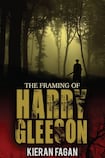
Initially, it feels odd to read a book in which the details of a murder that took place in 1940 are dredged up and combed through with forensic meticulousness. Who is the intended audience? Is there anything to be gained by dwelling on a violent death and the execution of the man convicted for it when these events took place so long ago, against a backdrop of near-apocalyptic global war? As Kieran Fagan’s excavation of a brutal killing and the miscarriage of justice that ensued unfolds, however, what emerges is an X-ray of rural Irish society and politics in the 1940s.
Earlier this year the State pardoned the unmarried 38-year-old Tipperary farmer who was hanged nearly 75 years ago for the murder of Mary "Moll" McCarthy. The Framing of Harry Gleeson seeks to determine who the true perpetrators were and why an innocent man came to be executed.
This is not the first book to examine the Gleeson case, but it will surely be the last. Unlike the authors before him who investigated the killing, Fagan, a former Irish Times journalist, does not stop short of naming the man who pulled the trigger – a local named Pak O'Gorman – and the men with IRA links who were his coconspirators.
The murder of Moll McCarthy took place in the townland of Marlhill, near New Inn in south Co Tipperary. McCarthy was an attractive 39-year-old redhead who, like her mother before her, had turned to prostitution in the face of poverty. She bore seven children to local men, some of whom were married.
Like the man who would be hanged for her murder, McCarthy was considered a blow-in, which amplified locals’ disdain for and resentment of her.
On a rainy November night in 1940 McCarthy was killed by a shotgun blast to her torso. A second shot, fired at extremely close range, took away her face. Various theories are put forward as motives for this second shot, including misogynistic rage and the desire to cover up head or neck injuries caused by an earlier punishment beating.
Harry Gleeson was the taciturn local farmer who discovered the body in a field and reported it to the Garda. Crucially, he lied by claiming he did not recognise whose corpse he had found. This lie, which Gleeson repeated under oath at his trial, would prove his undoing, undermining the jury’s confidence in him and allowing them to be more readily persuaded by a judge hostile to Gleeson. “Not telling people any more than you think they need to know is not an uncommon habit in rural Ireland,” Fagan writes.
Ninety pages are given over to a painstaking account of the trial and the night of McCarthy’s death, which does not always make for the most gripping of reading. But key facts are established: McCarthy had had sex in a disused farmhouse not long before she died; her body was moved, possibly by two or more people, after she had been killed. Gleeson consistently denied any involvement in the murder: “I had neither hand, act nor part in it.”
Sordid details
We are offered a fair few sordidly intimate details from the trial. At the time of her death, for instance, McCarthy’s stomach “contained half a pint or more of semi-fluid material which appeared to be partially digested bread and tea”. A doctor was brought in to show that “men who wear the same pair of trousers for a week often have semen stains on them without having had sex with a woman”.
Other details remind us that, for all its brutality and murkiness, this was a definitively Irish murder case: the prosecution claimed that “Gleeson was meeting Moll at the field pump, away from prying eyes, and arranging to give her potatoes in exchange for sex”.
What ultimately becomes clear is that, through a mixture of incompetence on the part of the defence, the judge’s hostility, and serious evidence tampering and the beating of a witness by gardaí, Gleeson was convicted on evidence far too flimsy to have justly sent him to the gallows.
Complicating matters was the fact that the barrister serving as Gleeson’s defence counsel was Seán MacBride, former IRA chief of staff and future minister for external affairs and winner of the Nobel Peace Prize. A son of Maud Gonne and the executed 1916 rebel John MacBride, Seán MacBride “was anathema to a wide swathe of public opinion in Ireland in the 1940s. For good reasons and bad ones, many had reason to dislike him and all he stood for.”
Although he failed to save Gleeson from the gallows, MacBride emerges as a man of integrity who, after his client’s hanging, consistently maintained Gleeson’s innocence. When, after a “partisan” summing-up by Judge Martin Maguire, the jury found Gleeson guilty, they added the peculiar caveat, “with a strong recommendation for mercy”. MacBride immediately launched an appeal. This too was botched, and in April 1941 Gleeson was hanged in Mountjoy Gaol. A fellow inmate’s account of the days leading up to the execution provides some of the book’s more haunting writing.
So what really happened? Why was Harry Gleeson framed for murder? Fagan’s conclusion is that Moll McCarthy was murdered out of a cesspit of mixed motives: rural shame and jealousy; the desire of respectable local men to keep their sexual secrets just that; and – the catalysing factor – anxiety among local IRA men, themselves beneficiaries of McCarthy’s sexual favours, that she was informing on them to a local Garda sergeant.
This group of IRA-affiliated men plotted to kill McCarthy and thereby silence her, claims Fagan. After her murder, in a “conspiracy of silence”, nobody in New Inn stood up in defence of a man whom they knew to be innocent. “In the twisted morality of the time,” McCarthy’s killers “seem to have convinced themselves that they were performing a public service.”
Hastily executed
The work of the authors and investigators who preceded Fagan, notably Marcus Bourke, author of Murder at Marlhill, led to a renewed attempt to see Gleeson vindicated.
His name has now been cleared: the State hastily executed a man who had committed no crime but had merely stumbled on a body – and who became the “most unfortunate man in the country”.
Fagan saves his last word for the other victim, who can never be vindicated. Moll McCarthy “tried to fend for herself and her children as best she could and lost her life in dreadful circumstances. We must remember the injustice done to her.”
Rob Doyle's debut novel, Here Are the Young Men, was published in 2014 by Lilliput and Bloomsbury. His second book, This Is the Ritual, will be published in January 2016











